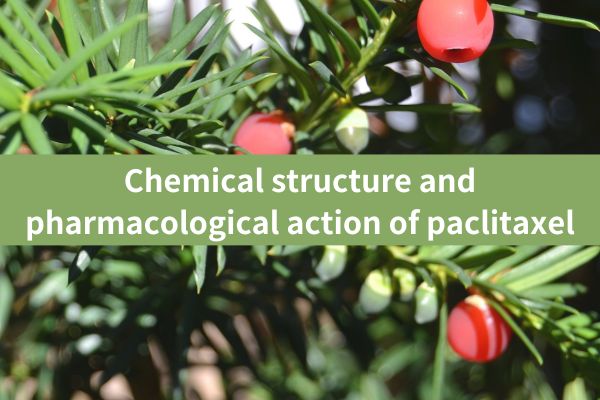Paclitaxel (Paclitaxel) is a natural anticancer drug extracted from the yew plant, which has unique chemical structure and pharmacological effects. Since the discovery of paclitaxel in 1971, its clinical application has achieved remarkable results. In this paper, the chemical structure and pharmacological action of paclitaxel will be discussed.
Chemical structure of paclitaxel
The chemical structure of paclitaxel is complex, consisting of several ring structures, including a core diterpenoid structure, which is a key part of the anti-cancer effect of paclitaxel. Paclitaxel molecules also contain a number of hydroxyl and ketone groups, and the location and number of these groups determine its unique pharmacological activity.
The pharmacological effects of paclitaxel
1. Microtubule stabilization: Paclitaxel can promote the polymerization of microtubules and stabilize the polymerized microtubules, which is a key mechanism of its anticancer effect. Microtubules play an important role in cell division, and paclitaxel inhibits tumor growth by stabilizing microtubules and preventing cell division.
2, induce cell cycle arrest: paclitaxel can also induce cell cycle arrest, so that cells can not continue to divide and proliferate. This is another important mechanism of its anticancer effect.
3, induce apoptosis: paclitaxel can induce the expression of several pro-apoptosis mediators, accelerate the apoptosis process of cancer cells.
4, regulation of anti-apoptotic mediators: paclitaxel can also regulate the activity of anti-apoptotic mediators to balance the process of apoptosis and proliferation.
Conclusion
Paclitaxel is a kind of natural anticancer drug with unique chemical structure and pharmacological action. It can effectively inhibit tumor growth by promoting microtubule polymerization, stabilizing polymerized microtubules, inducing cell cycle arrest and inducing cell apoptosis. However, the toxicity and side effects of paclitaxel are also a concern in clinical applications. Further research and understanding of the pharmacological effects of paclitaxel will help optimize its clinical use, improve therapeutic efficacy, and reduce side effects.
Future Outlook
Although the clinical application of paclitaxel has achieved remarkable results, the problem of its limited resources and tight supply still exists. Therefore, scientists in the fields of synthetic biology and medicinal chemistry are working to find alternatives to paclitaxel to solve its supply problems and reduce production costs. In addition, research into the pharmacological effects of paclitaxel will also help to discover more effective treatment strategies to tackle various cancer types.
In preclinical studies and clinical trials, the combination of paclitaxel and other anticancer drugs has shown promising prospects. By combining paclitaxel with other drugs, the effectiveness of treatment can be enhanced and the emergence of resistance reduced. In the future, with the popularization of precision medicine and personalized treatment concepts, the research and understanding of the pharmacological effects of paclitaxel will be more in-depth, and more accurate and effective treatment programs will be provided for cancer patients.
In general, paclitaxel is a natural anticancer drug with unique chemical structure and pharmacological effects. With the continuous progress of science and technology and in-depth research, we look forward to paclitaxel playing a greater role in the treatment of various cancers in the future, bringing better treatment outcomes and quality of life to patients.
Note: The potential benefits and applications presented in this article are derived from the published literature.
Post time: Nov-15-2023
